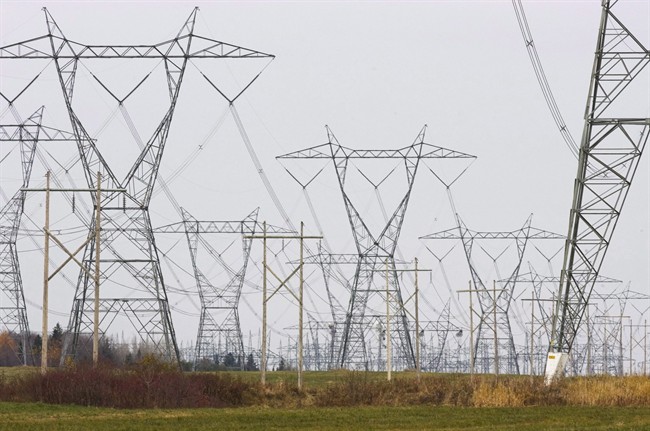The city of Vancouver’s announcement on Friday that it will ban natural gas by 2050 came as shock to residents, leaving many wondering how much this will cost them.

Going green — reducing our carbon footprint and eliminating our dependence on fossil fuels — is a goal that most provinces and cities are looking to achieve. But Canadians will have to learn to adapt.
READ MORE: 7 ways to lower your hydro bill this summer
“We’re talking about a cost imposed on residential, industrial, commercial, and institutional users of natural gas in thousands and thousands of dollars,” Jordan Bateman, B.C. director for the Canadian Taxpayers Federation, said.
“For the average family, we’re talking about $1,400 a year or more just in the energy bills from shifting to electricity, let alone ripping out furnaces or water heaters. Restaurants are going to be hurt if they use natural gas and schools are facing a $3.5 million bill in higher energy costs if they’re forced to move off natural gas.”
While the idea of going green may sound worrisome to those struggling to pay the bills now, the transition may not be as jarring as one might think. And that’s because it’s not all about electricity, where consumers have seen soaring rates.

“There are a lot of alternatives that aren’t ready yet,”said Warren Mabee, director of the Institute for Energy and Environmental Policy at Queen’s University in Kingston, Ont. “They are expensive now, but by 2050 we can make the transition.”
Believe it or not, one of those means is using natural gas. It’s called renewable natural gas or RNG.
READ MORE: Canada can transition to renewable energy in just a few decades, says Stanford University professor
A lot of methane gas is produced in landfills and farms. Using emerging technology, this gas can be converted and fed into homes, buildings and restaurants across the country, eliminating the need for homeowners to retrofit.
“Right now it’s not quite the quality of natural gas, so that’s a technical problem. And we don’t have a lot of production capacity right now, but eventually it could be part of the solution,” Mabee said.
“Over a 34-year period it’s completely feasible to imagine that you would have a swap-out of different technologies.”
Mabee also said that when governments introduce new legislation pertaining to consumers and energy, they most often introduce incentives, such as rebates. That’s something that Canadians are likely to see on the horizon.
Steve Ku, climate and clean energy policy analyst at the David Suzuki Foundation said that Canadians need to understand that converting to renewable energy sources may end up costing us less in the long run.
WATCH: West Block primer: The roadmap to renewable energy in Canada

“First and foremost climate change is something we’re already seeing happening,” he said. “And in terms of the impacts of climate change … if we allow climate change to go unabated, we’re going to end up paying for the consequences of that down the road.”
The consequences might look something like billions of dollars to build levees or finding ways to deal with rising sea levels as climate change continues.
“Moving away from natural gas and carbon pricing are some of the ways we can take action today to avoid paying the consequences in future,” Kux said.
This isn’t the first time we’ve found ourselves balking at change, fearful of what the future might look like on our pocketbooks.
In 1990, Canada banned leaded gasoline in passenger vehicles. At the time, consumers were concerned that the cost of unleaded gasoline would rise. However, the cost difference ended up being minimal, Mabee said.
WATCH: Alberta carbon levy pushing renewable energy innovations: province

Kux cited the elimination of CFCs in the 1980s through the Montreal Protocol which was designed to address the depletion of the ozone layer. At the time it was feared that changing the way we refrigerated foods or cooled our homes would drive up the price of appliances and consumer goods. But that never happened. And that’s because necessity is the mother of invention.
“When you decide to act on these things, it spurs on technological innovation,” said Kux.
“Eventually natural gas is going to be expensive because we can’t find a lot of it,” Mabee said.
READ MORE: Why living ‘off the grid’ isn’t possible for most Canadians
Instead, turning to renewable sources may be the right way to move. It’s not just about natural gas: we can look at solar energy and geothermal. The cost of solar panels is going down as technology improves; provinces are investing in more wind turbines and solar farms.
Increasingly, homeowners are able to take control of their energy sources.
“The electricity system is really being shaken up, and while prices in some places have been going up, at the same time homeowners are now able to have more and more control over their power bills,” said Dan Woynillowicz, policy director with Clean Energy Canada. “That might take the form of solar panels on their roof and a battery in their basement, or smart thermostats and appliances, or software that optimizes your home’s energy use to cut your bills.”
And, ultimately, the price of natural gas will go up, Woynillowicz said.
“It wasn’t so long ago when natural gas and oil prices were through the roof, and that’s likely to happen again. So you get some stability, and the price of renewable energy is going to keep getting cheaper.”
— With files from Global’s Jill Slattery


Comments